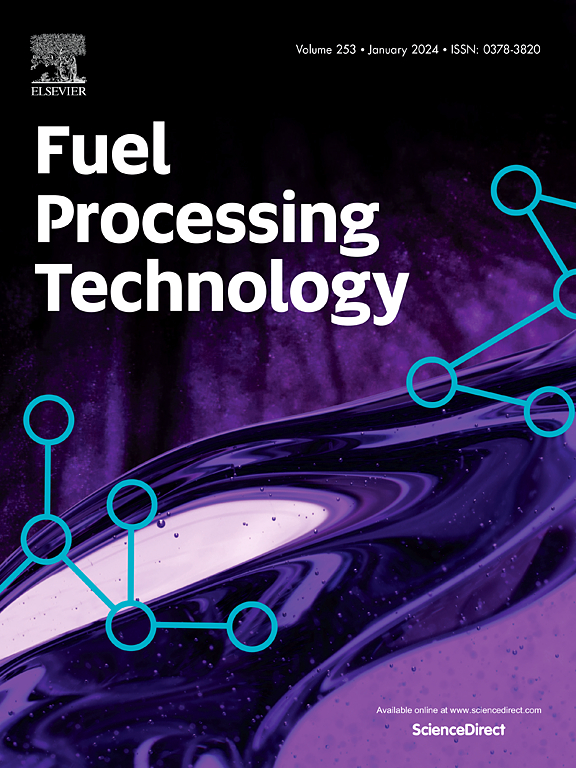Chemometrics to connect feedstock quality, process settings and calorific value of hydrochar through infrared spectra
IF 7.2
2区 工程技术
Q1 CHEMISTRY, APPLIED
引用次数: 0
Abstract
The current urgent need for clean energy has sparked interest in hydrothermal carbonization (HTC) as a sustainable avenue to convert high moisture biomass wastes into an efficient bioenergy source. Without destructive methodologies and offering distinct advantages (e.g. real-time analysis) over traditional assessments, chemometric methods coupled to Fourier Transform Infrared Spectroscopy (FTIR) is presented as an innovative approach for a rapid assessment of the higher heating value (HHV) of hydrochars. With the help of advanced chemometric techniques such as Partial Least Squares (PLS) or Sequentially Orthogonalized PLS (SO-PLS) further insights are gained into the underlying chemical transformations during HTC treatment of a wide variety of biodegradable wastes. Our model predicts the HHV of the diverse hydrochars with an impressive R2 value of 0.961 and an RMSE of 0.845 MJ/kg. The scores and loading plots point out the pivotal functional groups that distinguish the various hydrochars, while also unveiling the inherent similarities among them. A second model has been further devised to predict the HHV of hydrochar as a function of feedstock composition and HTC operation conditions, thus allowing process optimization. This challenging approach can be extrapolated to quickly evaluate other physicochemical parameters of hydrochars designed for various applications.
化学计量学通过红外光谱连接原料质量,工艺设置和碳氢化合物的热值
当前对清洁能源的迫切需求引发了人们对热液碳化(HTC)的兴趣,热液碳化是一种将高水分生物质废物转化为高效生物能源的可持续途径。与传统评估相比,化学计量学方法与傅里叶变换红外光谱(FTIR)相结合,没有破坏性的方法,并且具有明显的优势(例如实时分析),是一种快速评估碳氢化合物高热值(HHV)的创新方法。借助先进的化学计量技术,如偏最小二乘法(PLS)或顺序正交PLS (SO-PLS),进一步深入了解在HTC处理各种生物可降解废物期间的潜在化学转化。我们的模型预测了不同碳氢化合物的HHV, R2值为0.961,RMSE为0.845 MJ/kg。分数和加载图指出了区分各种碳氢化合物的关键官能团,同时也揭示了它们之间的内在相似性。第二个模型被进一步设计来预测碳氢化合物的HHV作为原料组成和HTC操作条件的函数,从而允许过程优化。这种具有挑战性的方法可以外推,以快速评估为各种应用而设计的碳氢化合物的其他物理化学参数。
本文章由计算机程序翻译,如有差异,请以英文原文为准。
求助全文
约1分钟内获得全文
求助全文
来源期刊

Fuel Processing Technology
工程技术-工程:化工
CiteScore
13.20
自引率
9.30%
发文量
398
审稿时长
26 days
期刊介绍:
Fuel Processing Technology (FPT) deals with the scientific and technological aspects of converting fossil and renewable resources to clean fuels, value-added chemicals, fuel-related advanced carbon materials and by-products. In addition to the traditional non-nuclear fossil fuels, biomass and wastes, papers on the integration of renewables such as solar and wind energy and energy storage into the fuel processing processes, as well as papers on the production and conversion of non-carbon-containing fuels such as hydrogen and ammonia, are also welcome. While chemical conversion is emphasized, papers on advanced physical conversion processes are also considered for publication in FPT. Papers on the fundamental aspects of fuel structure and properties will also be considered.
 求助内容:
求助内容: 应助结果提醒方式:
应助结果提醒方式:


